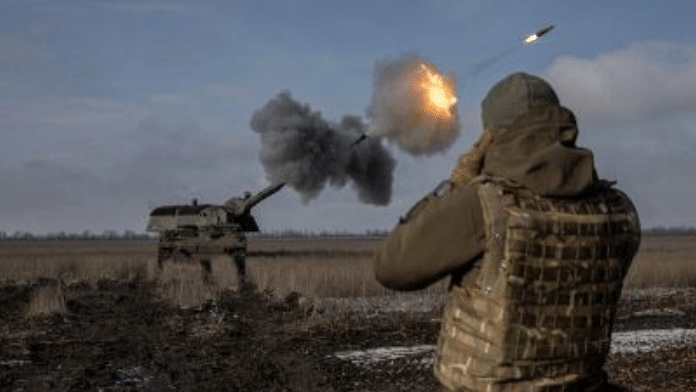New Delhi: Russia has suffered significant losses in its military power since its invasion of Ukraine, while Kyiv is scrambling to offset the hit its airpower has taken in the last one year, according to data by a think tank.
Further, China’s increase in defence spending for 2022 is its largest increase in absolute terms. There has been a 7 per cent rise in China’s defence spending from 2021, finds the Military Balance 2023, published by the International Institute of Strategic Studies (IISS).
The Military Balance is the annual assessment of global military capabilities and defence economics from the IISS. The IISS is a global think tank focussing on security and geopolitics. The 2023 edition of the Military Balance includes updated data on the military organisations, equipment inventories and defence budgets of 173 countries.
Significantly, the 2023 Military Balance finds that both Russian and Ukrainian militaries have suffered “attrition” through the course of the war.
Also Read: Four implications of a Russian defeat in Ukraine—one affects India the most
Effects of Russia’s war in Ukraine
Russia has suffered major losses in personnel as a consequence of the war. According to the Military Balance, Russia has offset losses in personnel through mobilisation. However, that has led to lesser experienced recruits joining their military.
Further, the IISS adds that the Russians have also endured major losses in their armoured vehicle fleet since the war started in February last year. Around 50 per cent of their pre-war fleet of T-72B3 and T-72B3M tanks, and many of Russia’s T-80s, have been assessed to have been lost. Due to these losses, Russia had to bring older tanks and equipment into the battlefield, the study said.
Russia’s losses have not been limited to its armoured vehicle fleet. Significantly, the Military Balance finds losses in Russia’s airpower as well.
“Russia in 2022 lost some 6–8 per cent of its active tactical combat aircraft inventory, but overall fleet size somewhat masks the loss to some individual types, including reductions reaching 10-15 per cent for some pre-war active multirole and ground-attack aircraft fleets, such as the Su-30SM Flanker H, Su-24M/M2 Fencer D, Su-25 SM/SM3 Frogfoot and Su-34 Fullback,” the Military Balance said.
Ukraine’s airpower has also suffered major losses through the course of the war. Given that Ukraine had fewer aircraft before the war, their losses have been higher proportionally compared to Russia. The IISS assesses that Ukraine has lost 50 per cent of its pre-war active tactical combat aircraft inventory.
Russia’s invasion of Ukraine has also had knock-on effects on the rest of Europe. “In 2022, around 20 countries in Europe announced either immediate uplift to defence spending or a stronger commitment to long term spending goals. The invasion has given North Atlantic Treaty Organization (NATO) renewed purpose; has impelled Finland and Sweden to apply to join the alliance; and has led states in eastern Europe to sharpen their focus on defence,” adds the Military Balance.
China’s military spending & regional states
The Military Balance 2023 finds that China’s rise in defence spending has also led to other countries in the region spending more on their respective militaries. Apart from spending on its aircraft carrier programme, the country is also investing heavily in enhancing its overall naval capacities.
To enhance its airpower, China is investing in J-20A combat aircraft, and has also started to deploy military aircraft with domestically produced jet engines, adds the IISS.
Significantly, as a consequence of China’s military spending, South Korea has been modernising their armed forces through 2022. However, this has also come in response to the nuclear threat posed by North Korea and the repeated missile tests conducted last year.
To counter China, the Military Balance 2023 said that “Japan is planning to boost its military capability with additional investments and new partnerships, including with the United Kingdom; and Australia continues to work with the UK and the US on its plans to introduce a nuclear-powered submarine capability.”
(Edited by Richa Mishra)
Also Read: India & Russia begin joint manufacturing of AK 203 rifles in UP, might export them too



